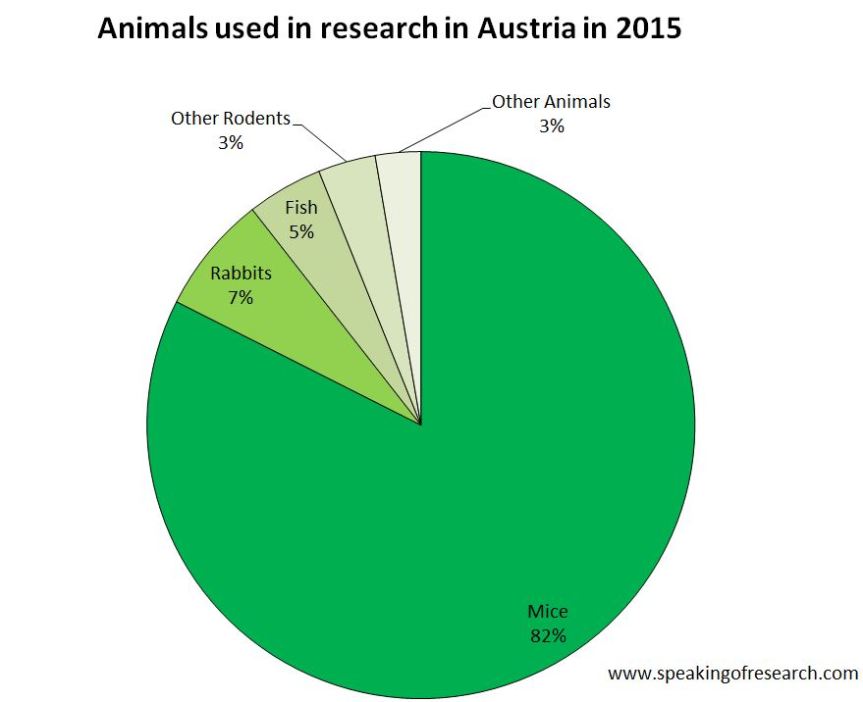Austria has published its statistics that show the number of animals used for research and testing in 2015. Austria carried out 227,317 procedures on animals in 2015, 8.7% more than in 2014.

The rise in the number of experiments is mainly due to a 7.1% rise in mice. There was a significant rise in the number of rabbits (+95%) and other rodents (+58%) used. There were also small rises in dogs (up 68% to 111 procedures) and cats (up 5 procedures to 34).

Mice continue to be the most commonly used species at 82%. Mice, rats and fish account for 89% of all animal procedures, rising to 96% if you include rabbits. It is interesting that Austria, rabbits are the second most common species, a fact not seen anywhere else in Europe, though neighbouring Germany also has a relatively high number (3.8% of total). The statistics show that most of these rabbits (93%) were involved in pyrogenicity studies (looking at fever response). No primates were used in Austria in 2015 (or 2014) and dogs and cats accounted for less than 0.07% of all animals used despite the rises in number of procedures for these species.

This year was the second year where there was retrospective assessment and reporting of severity (i.e. reporting how much an animal actually suffered rather than how much it was predicted to suffer prior to the study). Reassuringly the proportions in each severity banding was similar to 2014, suggesting the system has been well understood. The report showed that 60% of procedures were classed as mild, 24% as moderate, 12% as severe, and 4% as non-recovery, where an animal is anaesthetised for surgery, and then not woken up afterwards.
From historical statistics we can see that while there has been an overall decline of almost 50% since 1990, the numbers have been edging upwards since their nadir in 1999. These numbers tend to reflect changing science funding environments within the country.

Some animal rights groups have criticised the rise in numbers, noting that it is the highest number since 1994. This is cherry picking – the numbers have been relatively stable since 1994, and are far lower than the 450,000+ animals being used in 1990 and 1991.
Austria is one of the first countries to publish its 2015 annual statistics, and we will be looking out for the statistics of other European countries. See our summary of statistics to compare countries.
